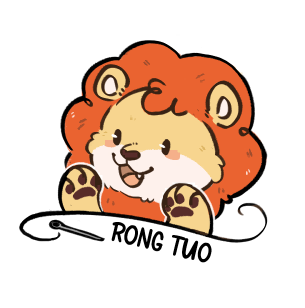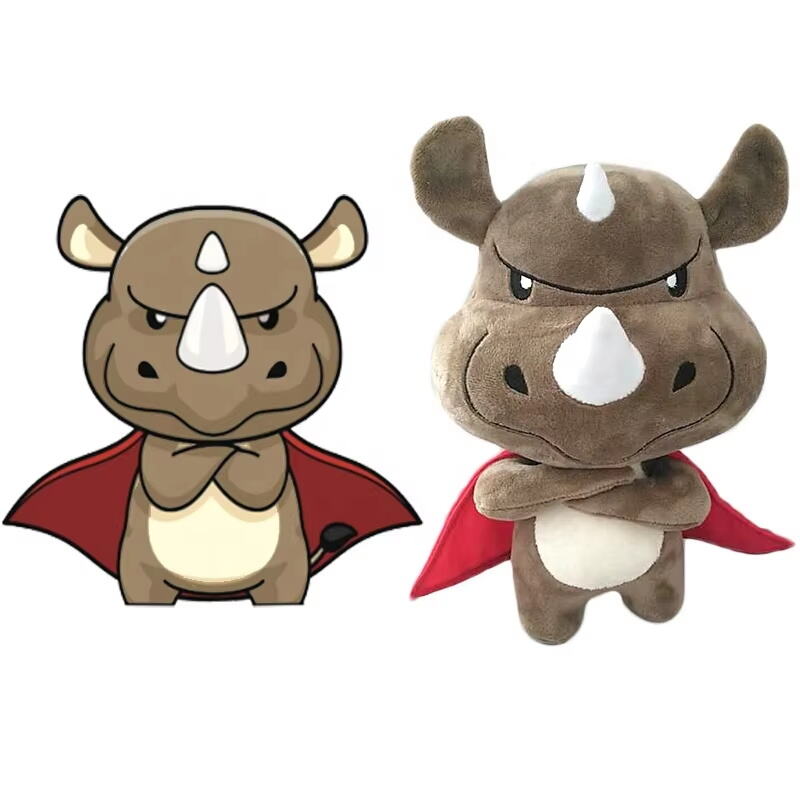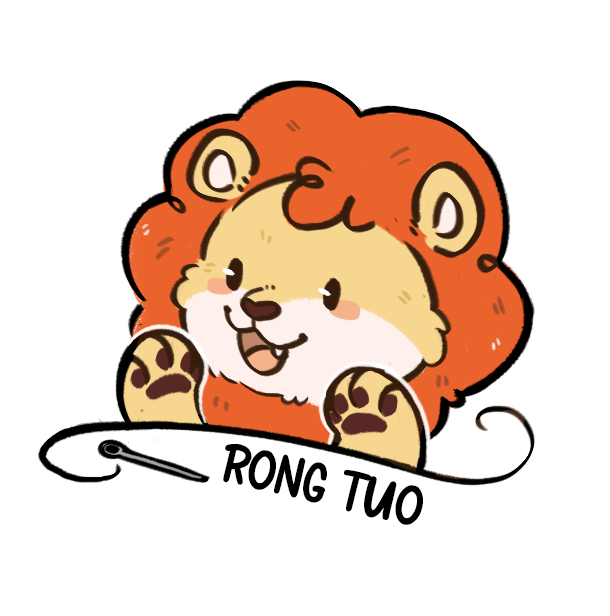Soft stuffed animals bring joy to kids and grown-ups too, acting as comfort companions and sometimes even becoming prized possessions. People really love these toys, so making them last is super important. Good quality plushies need to stand up to all sorts of things - little hands grabbing them constantly, frequent washes after snack messes, and whatever else life throws at them. When a plush toy can handle all this abuse, it stays safe for kids to play with while keeping its look and function intact for years instead of just weeks. Parents appreciate knowing their child's favorite friend won't fall apart after one rough day at daycare.
More parents are looking for really good quality plush toys as they become aware of what's available these days. Most want stuff made from materials that last through all sorts of rough handling because kids tend to treat their toys pretty roughly. Manufacturers have taken notice and now put a lot of emphasis on how long lasting their products actually are. Research shows that when plush toys stand up to regular play, families get more bang for their buck. These toys just don't break down as fast, so there's less need to keep buying replacements every few months. The combination of being safe for little hands plus saving money in the long run means durable plush toys are becoming popular among smart shoppers who care about both quality and value.
High-Density Foam for Resilience
Benefits of High-Density Foam in Plush Toys
When it comes to making plush toys that stand the test of time, high density foam plays a major role. The main benefit? These toys keep their shape much better than others, so they look good longer and don't collapse when kids play with them all day. What makes this foam special is how it fights back against compression forces. Even if someone sits on the toy or squeezes it hard during roughhousing, it bounces right back into place most of the time. Regular foam just falls apart after repeated use, but high density versions hold up way better. That's why we see so many stuffed animals staying soft and squishy for years instead of getting flat and unappealing. Manufacturers have caught onto this trend too, switching to high density materials because parents want toys that last through countless wash cycles and toddler experiments without losing their charm.
How It Resists Pressure and Deformation
High density foam has pretty good bounce back qualities, something important when it comes to standing up against pressure and squishing. What makes this stuff special is how it handles being compressed over and over again without actually changing shape much, so it's become a go to material for making those really durable stuffed animals. Tests show that the way molecules are arranged inside this foam spreads out weight evenly across surfaces, stopping little weak spots from forming where things might start to sag or deform later on. For kids that love squeezing their toys hard while playing around, these properties make all the difference. Parents definitely appreciate this because they don't have to replace broken down plushies every few weeks anymore. Just think about saving money in the long run rather than constantly buying new ones whenever old favorites get worn out from regular use at home.
Microfiber Filling for Shape Retention
Advantages of Microfiber as a Filling Material
When it comes to stuff inside plush toys, microfiber really shines because it's so light yet still gives great cushioning. Kids can easily pick up these toys without struggling, plus they get that wonderful soft feel against their skin. Another big plus? Microfiber doesn't cause allergies, something parents definitely care about when buying toys for little ones with sensitive skin issues. Plus this material soaks up moisture pretty well, meaning those beloved stuffed animals stay intact even after being thrown in the washer several times. The way microfiber fibers work together helps keep the toy looking fluffy and not flat after all those wash cycles. For companies making quality toys that last longer than just a few months on store shelves, microfiber just makes good business sense.
Its Ability to Withstand Pressure
Microfiber filling works really well at spreading out pressure evenly, so plush toys keep their shape better and don't start to sag after being played with for a while. Studies have shown that toys filled with microfiber hold up much better during tough play sessions compared to older ones stuffed with regular polyester. The reason? Microfiber just doesn't flatten out as easily, keeping the toy looking nice even after lots of handling. For this very reason, many manufacturers who care about making quality plush toys choose microfiber as their go-to material. Parents appreciate getting toys that stay looking fresh and new for months instead of weeks, which makes sense when thinking about value for money.
Memory Foam for Longevity
Memory Foam's Unique Properties
Memory foam has become pretty popular lately thanks to how it squishes and bounces back, which works great for stuffed animals. When kids hug these toys, the material molds around their little bodies then springs back into shape again, so they stay comfy even after lots of squeezes. What really stands out is how well memory foam takes hits without getting damaged, making it perfect for those bedtime cuddles where toddlers often throw themselves at their favorite plush friends. Parents notice something interesting too many kids seem to bond stronger with these squishy companions because they feel just right against their skin during playtime. We see this material showing up more and more in specialty toys designed for extra comfort, particularly helpful for children who need sensory support or have developmental differences that make traditional plushies uncomfortable or frustrating to interact with.
How it Maintains Shape Under Repeated Pressure
What makes memory foam so special? Well, it responds differently to pressure and heat compared to regular materials, helping toys keep their form even after being played with for ages. Some research has shown that when manufacturers use memory foam in toys instead of standard stuff, these toys actually hold up better against squishing and bending over time. Think about those stuffed animals kids love to hug all night long or squeeze during tantrums. With memory foam inside, they tend to bounce back to their normal look most of the time. Parents appreciate this because memory foam lasts longer than cheaper alternatives. When companies put memory foam into plush toys, they create something that stands the test of time rather than falling apart after just a few weeks of rough handling.
Strong Fabric Choices for Durability
Durable Fabrics Like Corduroy and Canvas
Corduroy and canvas are becoming go-to choices for making quality plush toys because they just plain hold up better over time. The real strength of these fabrics means kids can tug, pull, and generally abuse them without the toy falling apart or losing its shape. Parents love this aspect too since it cuts down on how often they need to fix or replace damaged items, especially when budgets are tight. Most folks who have bought plush toys know from experience that cheaper options don't last nearly as long. A well made plushie from durable fabric will probably stick around for years instead of getting tossed after a few months, making it worth every penny spent.
How These Fabrics Hold Up Under Stress
Corduroy and canvas hold up really well against all sorts of rough handling like pulling and rubbing. Studies show that stuffed animals made with these fabrics last much longer than other options while keeping kids happy because they don't fall apart so easily. The strength of these materials means less chance of holes forming or fabric coming undone, which keeps the fun going for months instead of weeks. Plus, both fabrics wipe down pretty easily after snack time messes or outdoor adventures, making them practical choices for busy parents who want toys that stay looking good even after lots of love and attention.
Reinforced Stitching for Added Strength
The Importance of Reinforced Stitching
The extra reinforcement in stitching makes all the difference when it comes to how long plush toys last, particularly during kids' roughhousing sessions. Double stitching gives these toys the extra muscle they need to handle constant grabbing and squeezing without coming apart at the seams. Research indicates that plush items with this kind of double seam construction tend to hold up much better than ones with just regular stitching, which means fewer broken toys overall. Most quality control departments actually test for stitch strength as part of their standard procedures because they know parents care about both safety and how long the toy will stay intact. Manufacturers highlight reinforced stitching on packaging and marketing materials since many shoppers specifically look for this feature when buying durable toys for their children.
How It Enhances the Toy's Durability
Strengthened stitching helps prevent those annoying situations where seams pop open or threads start to fray around the edges of plush toys. These little failures happen all the time in regular toys. Studies show that when manufacturers reinforce those seams, the toys can handle rougher handling during play sessions before showing signs of wear. Most parents appreciate getting toys that won't fall apart after just a few weeks of normal use. The extra effort in construction means these plush items last longer than cheaper alternatives on store shelves. Better stitching isn't just about looks either it actually makes the toys safer for kids to play with over extended periods. This attention to detail creates happier customers down the road since both children and their parents end up satisfied with products that stand the test of time.
Conclusion: Summary of Materials to Enhance Plush Toy Durability and Resistance to Pressure
When it comes down to it, picking good materials makes all the difference in making plush toys that last through daily play sessions. The best stuff includes things like dense foam, soft microfiber fabric, and that special memory foam everyone loves. These materials really help keep the toy looking good and feeling comfortable even after months of being played with. Fabrics need to be tough too so they don't get damaged easily. After all, who hasn't seen a beloved stuffed animal lose its stuffing or start fraying at the seams? A sturdy outer layer means kids can抱 them tight or throw them across the room without worrying about damage.
Sturdy stitching makes all the difference when it comes to how long plush toys last. Good quality toys won't have their seams coming apart or threads getting loose after kids play with them day after day. Parents looking for something that will stand up to rough handling might want to check for reinforced stitching in the construction. Toys built this way tend to become favorites in households because they actually survive multiple washes and countless hugs without falling apart. When parents spend money on well constructed plush items, they're often making a purchase that lasts through several childhood phases instead of just a few weeks. A properly made stuffed animal offers comfort while staying safe for little hands, giving both peace of mind and hours of happy playtime together.
Looking at what goes into making plush toys matters quite a bit actually. Parents who go for tougher materials that can handle some rough handling are basically setting their kids up with toys that last longer through all sorts of play sessions. These kinds of materials help keep the toys looking good and functioning safely even after months of being squeezed, tossed around, or sat on by little ones. The extra thought put into selecting better quality stuff isn't just about looks either it translates directly to happier kids and less frequent replacement costs for families in the long run.
FAQ
What materials make plush toys more durable?
Using high-density foam, microfiber, memory foam, and strong fabrics like corduroy and canvas can significantly enhance the durability of plush toys.
Why is reinforced stitching important for plush toys?
Reinforced stitching increases strength and prevents seams from coming apart, ensuring that plush toys can withstand rough handling and providing long-lasting use.
How do durable plush toys offer better value for money?
Durable plush toys last longer, reducing the need for frequent replacements, which adds economic value and ensures that they remain safe and enjoyable over time.


